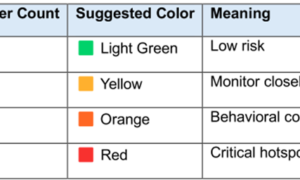In a groundbreaking research paper, Nihitha Sallapalli, an oil and gas industry expert from the United States, explores how real-time analytics is transforming oil production forecasting and reshaping industry standards. The comprehensive study reveals significant improvements in operational efficiency and decision-making processes through advanced data analysis techniques.
The Digital Revolution in Oil Fields
The oil and gas industry has witnessed a remarkable shift from traditional batch processing to real-time analytics, fundamentally changing how production forecasting is conducted. With global oil production reaching 95.0 million barrels per day in 2022, even minor improvements in forecasting accuracy can lead to substantial economic benefits. The integration of real-time data processing has shown promising results, with advanced algorithms reducing mean absolute percentage errors by up to 24.6% compared to conventional methods. This dramatic improvement demonstrates the potential of real-time analytics to revolutionize production forecasting.
Breaking Free from Legacy Systems
Traditional forecasting methods, which relied heavily on batch processing of historical data, often struggled to keep pace with the dynamic nature of oil production. These legacy systems frequently led to substantial forecast errors, especially in complex reservoirs with multiple variables. The implementation of real-time analytics has addressed these limitations, enabling immediate data analysis and faster response times to changing conditions. Real-time data integration has reduced uncertainty in production forecasts by up to 75% compared to traditional methods.
Smart Operations: The New Normal
Real-time analytics has revolutionized well performance monitoring by enabling continuous data analysis and rapid adjustments to optimize output. The technology allows production engineers to detect and diagnose system problems within minutes rather than hours or days. This immediate response capability has led to a significant reduction in non-productive time and a marked increase in operational efficiency. The system’s ability to provide instant insights has transformed how operators manage and optimize well performance.
Enhanced Decision-Making Through Data
The integration of real-time analytics has transformed decision-making processes in the oil and gas sector. The technology enables operators to make data-driven decisions quickly, responding to changing well conditions and production system behavior in real-time. This enhanced capability has resulted in a 30% improvement in production forecast accuracy and a 40% reduction in decision-making time during critical situations. The impact extends beyond immediate operations, influencing long-term strategic planning and resource allocation.
Strengthening Industry Standards
Real-time analytics has also strengthened compliance and accountability in the industry. Automated data collection and validation systems have reduced manual data entry errors by up to 95% while improving data accuracy from 85% to 99.5%. This enhanced accuracy has led to more reliable regulatory reporting and increased stakeholder confidence in operational data. The time required to prepare regulatory reports has decreased by 50-60%, while the accuracy of regulatory submissions has improved by 30-35%.
Future-Proofing Operations
The implementation of real-time analytics has shown remarkable improvements in various operational aspects. Organizations have reported a 70% reduction in data-related disputes, while the time required to detect and correct data discrepancies has decreased from two weeks to less than 24 hours. These improvements have contributed to a 15% increase in overall operational efficiency. The technology has also enabled a 50% reduction in audit time and a 30% decrease in compliance-related costs.
Building Trust Through Technology
The adoption of real-time analytics has fostered greater trust in forecasting models and decision-making processes. The technology has improved production forecast accuracy by 25-30% and increased confidence in decision-making processes by 45% among executives and managers. This enhanced reliability has led to a 40% increase in the adoption of data-driven decision-making processes across organizations. The implementation has also resulted in a 20% improvement in reserve estimates accuracy and a 15% increase in well intervention success rates.
Looking ahead, the integration of real-time analytics with artificial intelligence and machine learning techniques promises even greater advancements. The technology’s ability to process and analyze data in real-time continues to evolve, offering new possibilities for operational optimization and resource management. As Nihitha Sallapalli concludes in the research, this technological evolution is not just improving current operations but is fundamentally revolutionizing how the industry operates and manages its resources, setting new standards for efficiency and reliability in oil production forecasting.































